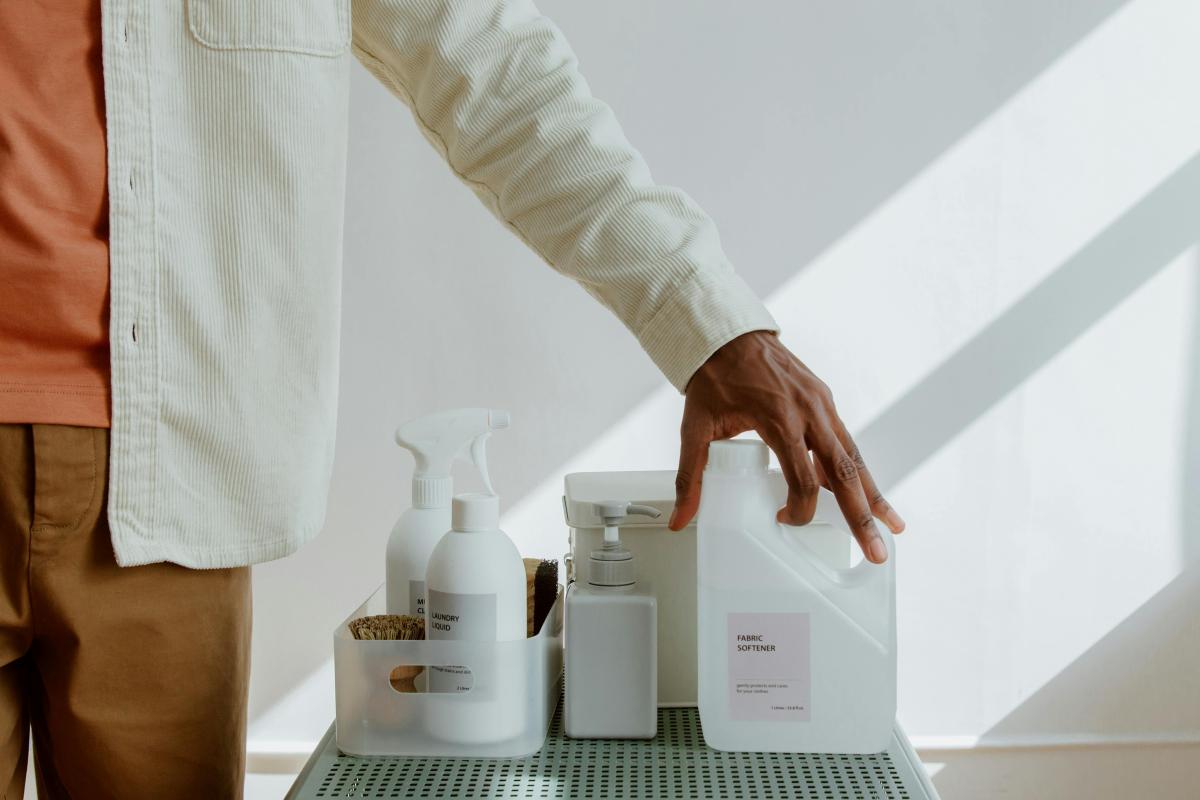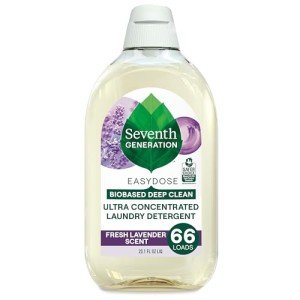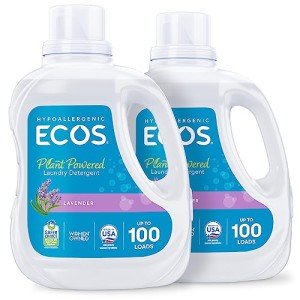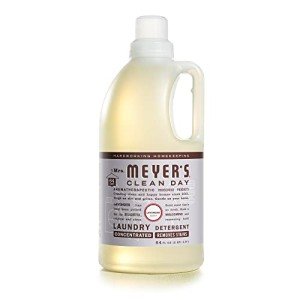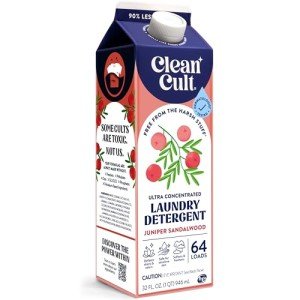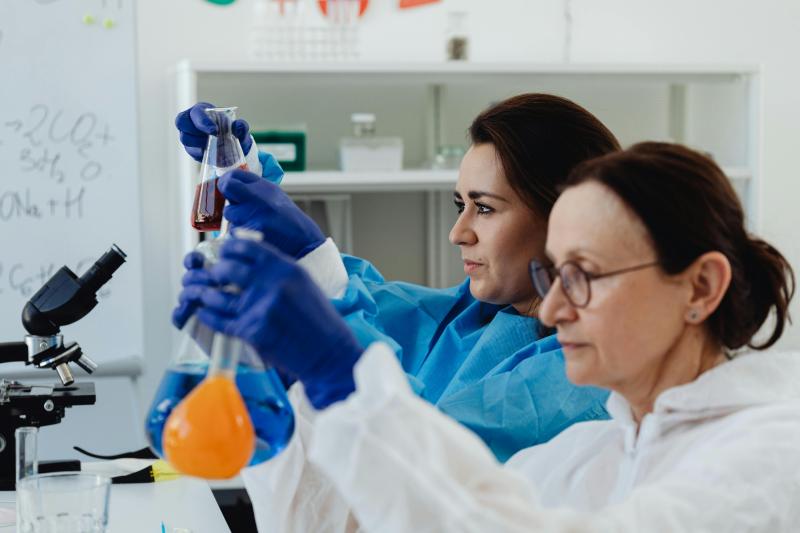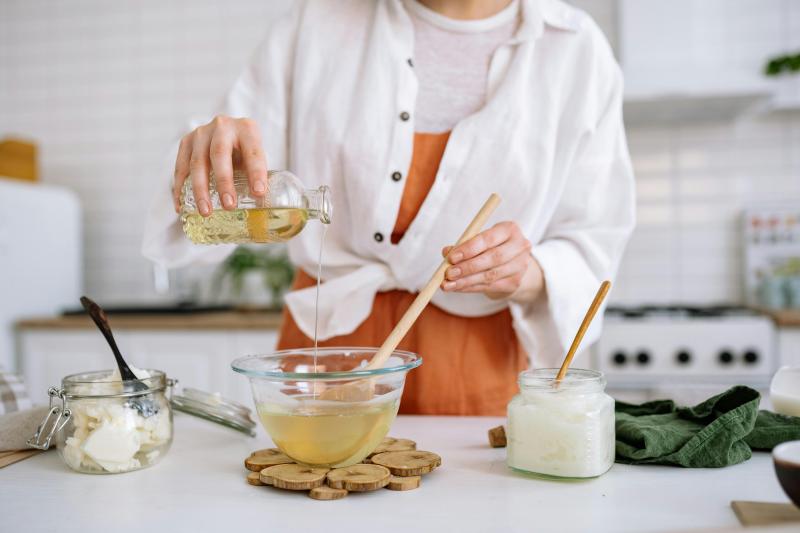|
BY JONATHAN ESSARY · JUNE 23, 2025 |
|
READ EST: 7 MINS |
YOUR SIMPLIFIED GUIDE
As parents, we strive to create the safest possible environment for our children. Yet, many conventional cleaning products harbor hidden dangers that could be silently affecting your family's health[1][2]. These seemingly innocent bottles under your sink might contain toxic chemicals linked to respiratory issues, hormone disruption, and even long-term health concerns[3][4].
In this comprehensive guide, we'll expose the 22 most concerning chemicals lurking in everyday cleaning products and provide safer alternatives that effectively clean your home without compromising your family's wellbeing[5][6]. By making informed choices about the products you bring into your home, you can significantly reduce your family's exposure to harmful substances while maintaining a clean, healthy living space[7][8].
WHY CONVENTIONAL CLEANING PRODUCTS POSE RISKS TO YOUR FAMILY
A recent peer-reviewed study by Environmental Working Group scientists analyzed 30 common cleaning products and detected a staggering 530 unique VOCs, with 193 of these classified as hazardous to human health[3]. These chemicals have been linked to respiratory problems, allergic reactions, skin irritation, and even more serious conditions with prolonged exposure[4][9].
For families with babies and young children, the risks are even greater[7]. Children's developing bodies are more vulnerable to chemical exposures, and their hand-to-mouth behaviors increase the likelihood of ingesting residues from cleaned surfaces[4][7]. Additionally, babies spend more time on floors and other surfaces that are frequently cleaned with these products[7][10].
THE 22 MOST CONCERNING CHEMICALS IN YOUR CLEANING PRODUCTS
1. PHTHALATES
Where found: Fragranced products including dish soap, air fresheners, and even toilet paper[2][10]
Health concerns: Endocrine disruption, reproductive toxicity, developmental issues[11][10]
Safer alternative: Choose fragrance-free products or those scented with pure essential oils[7][8]
2. PERCHLOROETHYLENE (PERC)
Where found: Carpet and upholstery cleaners, spot removers[2][12]
Health concerns: Neurotoxicity, possible carcinogen, environmental contamination[2][12]
Safer alternative: Plant-based carpet cleaners or simple solutions like club soda for spills[6][7]
3. TRICLOSAN
Where found: Antibacterial products, dishwashing liquids[13][10]
Health concerns: Hormone disruption, antibiotic resistance, environmental toxicity[13][10]
Safer alternative: Regular soap and water, which are equally effective at removing germs[6][14]
4. QUATERNARY AMMONIUM COMPOUNDS (QUATS)
Where found: Disinfectants, fabric softeners, antibacterial cleaners[1][13]
Health concerns: Respiratory irritation, asthma triggers, antimicrobial resistance[5][13]
Safer alternative: Vinegar-based disinfectants or hydrogen peroxide solutions[6][14]
5. 2-BUTOXYETHANOL
Where found: Window cleaners, multi-purpose cleaners[12][13]
Health concerns: Eye and respiratory irritation, potential liver and kidney damage[12][13]
Safer alternative: Vinegar and water solutions for streak-free glass cleaning[6][8]
6. AMMONIA
Where found: Glass cleaners, bathroom cleaners, polishing agents[12][9]
Health concerns: Respiratory irritation, eye irritation, particularly dangerous for those with asthma[12][9]
Safer alternative: Equal parts vinegar and water in a spray bottle for effective glass cleaning[14][8]
7. CHLORINE BLEACH (SODIUM HYPOCHLORITE)
Where found: Disinfectants, whitening products, mold removers[5][12]
Health concerns: Respiratory irritation, can create toxic gases when mixed with other cleaners[5][12]
Safer alternative: Hydrogen peroxide or oxygen-based bleach alternatives[6][14]
8. SODIUM LAURYL SULFATE (SLS) AND SODIUM LAURETH SULFATE (SLES)
Where found: Dish soaps, laundry detergents, foaming cleaners[1][10]
Health concerns: Skin irritation, potential contamination with carcinogenic byproducts[11][10]
Safer alternative: Castile soap or plant-derived surfactants like decyl glucoside[7][8]
9. FORMALDEHYDE
Where found: Preservatives in many cleaning products, sometimes listed as formalin[12][13]
Health concerns: Known human carcinogen, respiratory irritation, skin sensitization[12][13]
Safer alternative: Products certified by third-party organizations like MADE SAFE or EWG Verified[2][7]
10. VOLATILE ORGANIC COMPOUNDS (VOCS)
Where found: Air fresheners, aerosol products, furniture polish[5][3]
Health concerns: Respiratory irritation, headaches, dizziness, potential organ damage[3][9]
Safer alternative: Essential oil diffusers, open windows for ventilation, baking soda for odor absorption[14][8]
11. NONYLPHENOL ETHOXYLATES
Where found: Laundry detergents, all-purpose cleaners[13][10]
Health concerns: Endocrine disruption, environmental persistence, aquatic toxicity[13][10]
Safer alternative: Plant-based detergents with coconut-derived surfactants[7][8]
12. PHOSPHATES
Where found: Dishwasher detergents, some laundry products[15][6]
Health concerns: Environmental damage, water pollution, algal blooms[15][6]
Safer alternative: Phosphate-free dishwasher detergents, baking soda boosters[6][14]
13. ARTIFICIAL FRAGRANCES
Where found: Nearly all conventional cleaning products[2][11]
Health concerns: Allergic reactions, respiratory irritation, potential hormone disruption[11][10]
Safer alternative: Unscented products or those fragranced with pure essential oils[7][8]
14. BENZALKONIUM CHLORIDE
Where found: Disinfectants, antibacterial sprays[5][13]
Health concerns: Skin irritation, asthma trigger, antimicrobial resistance[5][13]
Safer alternative: Thyme oil-based disinfectants, hydrogen peroxide solutions[14][7]
15. SODIUM HYDROXIDE (LYE)
Where found: Oven cleaners, drain openers[12][6]
Health concerns: Highly corrosive, can cause severe burns to skin and eyes[12][6]
Safer alternative: Baking soda paste for oven cleaning, mechanical drain clearing methods[6][14]
16. ETHANOLAMINES (MEA, DEA, TEA)
Where found: All-purpose cleaners, floor cleaners[13][4]
Health concerns: Skin irritation, potential organ system toxicity[13][4]
Safer alternative: Castile soap-based all-purpose cleaners[14][7]
17. BUTYL CELLOSOLVE
Where found: All-purpose cleaners, degreasers[16][12]
Health concerns: Nervous system effects, kidney and liver damage[16][12]
Safer alternative: Citrus oil-based degreasers, baking soda scrubs[14][8]
18. SYNTHETIC COLORS
Where found: Brightly colored cleaning products[13][11]
Health concerns: Allergic reactions, potential links to behavioral issues in children[13][11]
Safer alternative: Naturally colored or color-free cleaning products[7][8]
19. PARABENS
Where found: Preservatives in many liquid cleaning products[11][10]
Health concerns: Endocrine disruption, potential reproductive effects[11][10]
Safer alternative: Products preserved with radish root ferment or other natural preservatives[7][8]
20. GLYCOL ETHERS
Where found: Glass cleaners, carpet cleaners[16][4]
Health concerns: Reproductive issues, blood disorders[16][4]
Safer alternative: Simple vinegar and water solutions, steam cleaning for carpets[14][8]
21. TETRACHLOROETHYLENE
Where found: Carpet and upholstery cleaners[16][12]
Health concerns: Classified as a probable carcinogen, harmful when inhaled[16][12]
Safer alternative: Baking soda for carpet deodorizing, plant-based spot cleaners[6][7]
22. CHLOROFORM
Where found: Can form when chlorine bleach mixes with organic matter[5][12]
Health concerns: Liver and kidney damage, potential carcinogen[5][12]
Safer alternative: Hydrogen peroxide, oxygen-based bleach alternatives[6][14]
HOW TO IDENTIFY SAFER ALTERNATIVES FOR YOUR FAMILY
Navigating the world of cleaning products can feel overwhelming, especially when trying to decipher complex ingredient lists[2][17]. Here are practical strategies to help you identify truly non-toxic alternatives:
LOOK FOR TRANSPARENT INGREDIENT DISCLOSURE
Reputable non-toxic brands willingly disclose all ingredients on their labels or websites[2][17]. Be wary of products that use vague terms like "fragrance" or "cleaning agents" without specifying exactly what these contain[2][10]. Complete transparency is a hallmark of truly safe cleaning products[17][7].
UNDERSTAND CERTIFICATION LOGOS
Several third-party organizations evaluate and certify cleaning products based on strict safety criteria[15][17]. Look for these trusted certifications:
· EPA Safer Choice: Products with this label meet the Environmental Protection Agency's strict criteria for human and environmental safety[15][5]
· MADE SAFE: One of the most comprehensive safety standards, certifying products made without known toxic chemicals[2][7]
· Green Seal: Indicates products meeting rigorous health and environmental standards[15][17]
· EWG Verified: Products that meet the Environmental Working Group's strict criteria for transparency and health[2][3]
BEWARE OF GREENWASHING
Terms like "natural," "green," and "eco-friendly" are unregulated and can be used by any product, regardless of its actual ingredients[18][17]. Instead of relying on marketing claims, always check the ingredient list and look for third-party certifications[2][17].
DIY ALTERNATIVES FOR BUDGET-CONSCIOUS FAMILIES
Creating your own cleaning solutions can be both economical and effective[6][14]. Simple ingredients like vinegar, baking soda, and castile soap can tackle most household cleaning needs[14][8]:
· All-purpose cleaner: Mix equal parts water and white vinegar with a few drops of essential oil[6][14]
· Bathroom scrub: Make a paste with baking soda and water[6][14]
· Glass cleaner: Combine 1 part vinegar with 4 parts water in a spray bottle[14][8]
· Disinfectant: Use hydrogen peroxide in a spray bottle (store in an opaque container)[6][14]
SAFER CLEANING PRODUCTS FOR EVERY ROOM IN YOUR HOME
KITCHEN
Kitchens are high-risk for chemical exposure since food prep surfaces are often cleaned with products containing ingredients like 2-butoxyethanol, which can harm the liver and kidneys. Residues from these cleaners may linger on counters and utensils, and VOCs can pollute indoor air, raising risks for everyone, especially kids.
· Dish soap: Look for plant-based formulas free from SLS/SLES, artificial fragrances, and preservatives[11][7]
· Dishwasher detergent: Choose phosphate-free, chlorine-free options with mineral-based cleaning agents[6][7]
· Counter cleaner: Opt for hydrogen peroxide-based or plant-derived disinfectants[14][7]
BATHROOM
Bathrooms concentrate harsh chemicals such as sodium laureth sulfate and chlorine bleach, which can irritate skin and lungs. Poor ventilation means fumes stick around, and residues can contact sensitive skin during baths. Kids are especially at risk if they access cleaning supplies stored here.
· Tub and tile cleaner: Select oxygen-based or citric acid cleaners instead of chlorine bleach[6][7]
· Toilet bowl cleaner: Use baking soda and vinegar or plant-based alternatives to harsh chemical cleaners[6][14]
· Mold and mildew solutions: Look for hydrogen peroxide-based products rather than chlorine bleach[6][7]
LAUNDRY ROOM
Laundry rooms are hotspots for toxins like phosphates, 1,4-dioxane, and synthetic fragrances. These chemicals can remain in fabrics, exposing skin to irritants and potential carcinogens. The confined space also traps harmful vapors, increasing exposure for the whole family.
· Detergent: Choose fragrance-free, plant-based formulas without optical brighteners or synthetic fragrances[11][7]
· Stain removers: Opt for oxygen-based or enzyme-based stain fighters instead of chlorine bleach[6][7]
· Fabric softeners: Replace with white vinegar in the rinse cycle or wool dryer balls[6][14]
LIVING AREAS
Living rooms and play spaces often contain chemical-laden carpet cleaners, air fresheners, and furniture polish. Ingredients like PERC and formaldehyde can linger in the air and on surfaces, posing ongoing risks—especially for children who spend lots of time on floors and furniture. Synthetic fragrances add to indoor air pollution and can trigger allergies or asthma.
· Carpet cleaners: Select plant-based formulas without PERC, ammonia, or artificial fragrances[2][7]
· Furniture polish: Use a mixture of olive oil and lemon juice instead of petroleum-based products[6][14]
· Air fresheners: Replace chemical sprays with essential oil diffusers or open windows for ventilation[14][8]
MAKING THE TRANSITION TO A NON-TOXIC HOME
Transitioning to safer cleaning products doesn't have to happen overnight[17][7]. Take these practical steps to create a healthier home environment gradually:
1. Start with High-Priority Areas
Begin by replacing products used in areas where your children spend the most time, such as floor cleaners, laundry detergents for their clothes, and bath products[17][7].
2. Replace Products as They Run Out
Instead of discarding everything at once, simply replace each conventional product with a safer alternative when it's empty[17][7]. This approach is both economical and less overwhelming[17][8].
3. Focus on Multipurpose Solutions
Invest in a few high-quality, multipurpose non-toxic cleaners rather than having a specific product for every cleaning task[17][7]. This simplifies your routine and reduces costs[17][8].
4. Read Labels Carefully
Even products marketed as "natural" or "green" may contain problematic ingredients[2][17]. Always check the full ingredient list rather than relying on front-label claims[2][7].
5. Consider Your Family's Specific Needs
If family members have asthma, allergies, or skin sensitivities, prioritize fragrance-free products and those specifically formulated for sensitive individuals[11][7].
CREATING A TRULY SAFE HAVEN FOR YOUR FAMILY
The chemicals hiding in conventional cleaning products pose unnecessary risks to your family's health, particularly for vulnerable little ones with developing bodies and immune systems[3][7]. By identifying these harmful ingredients and choosing safer alternatives, you're taking a significant step toward creating a truly healthy home environment[7][8].
At Baby Safe Clean, we understand the challenge of sorting through countless product options and confusing ingredient lists[17][7]. That's why we've carefully curated a collection of genuinely non-toxic cleaning solutions that effectively clean your home without compromising your family's health[17][7]. Our products are rigorously vetted to ensure they're free from the 22 toxic chemicals discussed in this article[2][7].
Remember, every small change makes a difference in reducing your family's chemical exposure[11][8]. Whether you're just beginning your non-toxic journey or looking to refine your existing routine, we're here to support you with trusted products and honest information every step of the way[17][7].
Visit our store to explore our family-tested, curated collection of non-toxic cleaning solutions that provide peace of mind along with a spotlessly clean home[17][7].
REFERENCES & SOURCES:
- https://homecourt.co/blogs/natural-cleaning-products/common-chemicals-found-in-cleaning-products-a-comprehensive-guide
- https://madesafe.org/blogs/viewpoint/how-to-find-safer-cleaning-products
- https://www.ewg.org/news-insights/news-release/2023/09/cleaning-products-emit-hundreds-hazardous-chemicals-new-study
- https://pmc.ncbi.nlm.nih.gov/articles/PMC4096065/
- https://www.lung.org/clean-air/indoor-air/indoor-air-pollutants/cleaning-supplies-household-chem
- https://www.co.polk.or.us/cd/eh/hhw/safe-alternatives-toxic-household-products
- https://themotherhuddle.com/baby-safe-cleaning-products/
- https://goodonyou.eco/8-natural-alternatives-for-a-greener-and-cleaner-home/
- https://fmj.ifma.org/the-hidden-dangers-of-everyday-cleaning-products
- https://www.youngliving.com/blog/unveiling-endocrine-disruptors-in-cleaners/
- https://aspenclean.com/blogs/sustainable-living/chemicals-in-cleaning-products-and-how-it-affects-your-health
- https://www.drweil.com/health-wellness/balanced-living/healthy-home/are-household-cleaners-harmful/
- https://www.seventhgeneration.com/blog/avoid-these-12-chemicals-concern-cleaning-products
- https://wakeup-world.com/2012/05/23/five-ways-to-naturally-replace-your-toxic-cleaners/
- https://www.amerimedcpr.com/wp-content/uploads/Commonly-Used-Toxic-Cleaning-Products-UCSF.pdf
- https://www.chemtronics.com/4-toxic-chemicals-hiding-in-your-companys-contact-cleaners-and-degreasers
- https://www.ranktracker.com/blog/green-cleaning-seo/
- https://donhesh.com.au/blog/seo-for-cleaning-products-promoting-eco-friendly-cleaning-solutions/
